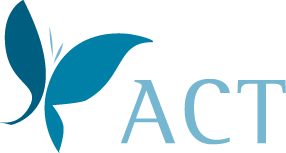 Trichotillomania is a disorder that causes people to pull out the hair from various parts of the body. It can include one’s scalp, eyelashes, eyebrows, pubic area, underarms, beard, chest, legs or other parts of the body, resulting in noticeable bald patches. Hair pulling varies greatly in its severity, location on the body, and response to treatment. For certain individuals, trichotillomania is mild and can be managed. For others, at times the urge may be so strong that it makes thinking of anything else nearly impossible.
Trichotillomania is a disorder that causes people to pull out the hair from various parts of the body. It can include one’s scalp, eyelashes, eyebrows, pubic area, underarms, beard, chest, legs or other parts of the body, resulting in noticeable bald patches. Hair pulling varies greatly in its severity, location on the body, and response to treatment. For certain individuals, trichotillomania is mild and can be managed. For others, at times the urge may be so strong that it makes thinking of anything else nearly impossible.
Trichotillomania (also referred to as TTM or “trich”) is currently defined as an impulse control disorder. There continues to be debate about how it should be classified. It may seem to resemble a habit, an addiction, a tic disorder or obsessive-compulsive disorder. Most recently, it is being conceptualized as part of a family of “body-focused repetitive behaviors” (BFRBs) along with skin picking and nail biting.
Trichotillomania is a serious condition that is largely unknown to the public. Trichotillomania can occur when a person experiences various emotions such as anxiety, fear, sadness, excitement or boredom. Some individuals state that the act of repetitively pulling their hair creates pleasurable feelings. Some people may pull their hair for a few seconds while others may devote hours. If hair pulling becomes more serious or extreme, it can negatively impact a person’s social life, work or relationships.
A person can suffer from hair pulling in isolation. However, it can co-occur with other medical conditions such as anxiety or depression. Nevertheless, it is vital for a practitioner to identify whether the hair pulling is a symptom of another condition that warrants treatment. For instance, hair pulling could be a symptom of illnesses such as body dysmorphic disorder, obsessive-compulsive disorder, developmental disorders (like autism), and psychosis. Determining whether hair pulling is an autonomous condition or a symptom of another disorder is critical in creating an effective treatment plan.



